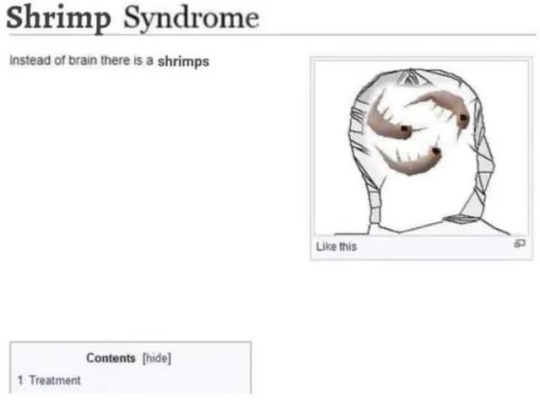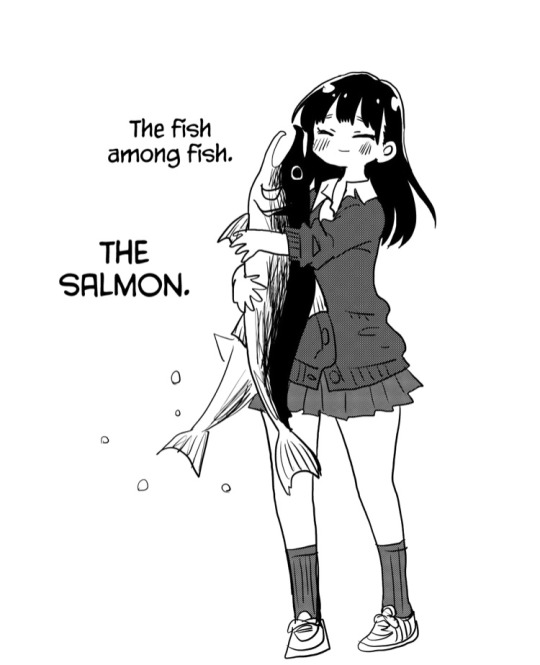i love all my tanks equally, especially the shrimp tank
Don't wanna be here? Send us removal request.
Text
He then said a better joke would be to call it ich-stremely blue
My brother and I'm favorite joke is working song lyrics into regular conversation so I told him that dosing ich x into a tank with black silicone was like blue on black
4 notes
·
View notes
Text
My brother and I'm favorite joke is working song lyrics into regular conversation so I told him that dosing ich x into a tank with black silicone was like blue on black
4 notes
·
View notes
Text
Round 3 - Malacostraca - Mysida




(Sources - 1, 2, 3, 4)
Order: Mysida
Common Name: “Opossum Shrimps”
Families: 2 - Mysidae and Petalophthalmidae
Anatomy: shrimp-like; stalked eyes; two pairs of antennae; thorax consists of eight segments each bearing branching limbs, concealed beneath a protective carapace; abdomen consists of six segments and, usually, smaller limbs; females have a marsupium (brood pouch)
Diet: filter feeders on algae, detritus, and zooplankton
Habitat: worldwide in marine, brackish, and some freshwater environments; can be benthic or pelagic in shallow or deep waters
Evolved in: unknown

(source)
Propaganda under the cut:
A few species of mysid, mostly in the subfamily Heteromysinae, are commensal (a form of symbiosis in which members of one species gain benefits while those of the other species neither benefit nor are harmed) and are associated with sea anemones and hermit crabs.
The species Mysidium integrum has a mutualistic relationship with Longfin Damselfish (Stegastes diencaeus), with the mysid providing nutrients for the algae farms the fish tends to and feeds on, and the fish providing protection from predators. The interaction has been described as a form of domestication, with the fish caring for the crustaceans as livestock.
The freshwater species of the genus Mysis have been referred to as “glacial relicts”, species whose range was once much wider in previous epochs. Mysis relicta (image 3) is a freshwater species now relegated to boreal lakes of Northern Europe, though it is also present in the Baltic Sea. The North American lakes, including the Great Lakes, are inhabited by Mysis diluviana. Various species of Mysis are found in lakes of the South Swedish highlands, like Lake Sommen, that were never connected to the sea or the Baltic Ice Lake. This have led to theories that claim a natural lock system existed in the area during the Younger Dryas (12,900 to 11,700 years Before Present).
Possibly the cutest mysids, species of the genus Idiomysis are just few millimeters in length, with a rounded cephalothorax and a characteristic curled-up abdomen (image 2 and gif). When compared with other mysids, Idiomysis species have short antennae, relatively big eyes and a small, usually unarmed telson. They live in small groups of 5 to more than 40 individuals, which hover over the sea bottom, looking like a swarm of tiny orbs with big eyes.
The Chameleon Shrimp (Praunus flexuosus) (image 1) is named for its highly variable coloration, ranging from brown or red to green.
Male Mysids have a pair of long penises (penii?), which are both inserted into the female’s marsupium during sex. His release of sperm into the marsupium stimulates the female, who releases eggs usually within an hour. The young are fertilized and retained within the marsupium until they emerge, as miniature adults. Follow for more Penis Facts.
Mysids form an important part of the diet of many fish, such as as shad (family Alosidae) and flounder (suborder Pleuronectoidei).
Americamysis bahia and Americamysis almyra are frequently used for bioassays, to test for pesticides and other toxic substances, with A. bahia found to be more sensitive during the periods when it is moulting.
29 notes
·
View notes
Text
I don't think I've ever used ich-x before but I am trying it because things are still pretty low stakes and that shit is BLUE
11 notes
·
View notes
Text
Part of me is like oh what if I was freaking out over nothing and the white spots don't mean anything and I throw a bunch of meds at it and it just makes everything worse even though I KNOW that's the devil talking and treating while it's not advanced is my best shot at getting rid of it but ugh
8 notes
·
View notes
Note
sh….shrip
two of them....

41 notes
·
View notes
Text
who wants to go to the aquarium with me i want to stand in cold rooms for two hours straight and look at jellyfish and maybe pet a small stingray
140K notes
·
View notes
Text
the very first quote for replacing the ac part that's broken was 7k and the quote for a whole new furnace/ac since they're 20 years old was almost 19k 🙃🙃🙃
#not shrimp#WHY are these so expensive.#the same dude did my ac/furnace/water heater in my old place a year ago for 11k so respectfully what the fuck
5 notes
·
View notes
Text
Round 3 - Malacostraca - Lophogastrida




(Sources - 1, 2, 3, 4)
Order: Lophogastrida
Common Name: no common name for the collective order; often called “opossum shrimp”, though this common name is often used specifically for the order Mysida instead
Families: 3 - Eucopiidae, Gnathophausiidae, Lophogastridae
Anatomy: shrimp-like; a carapace covers the head and thorax, often extending beyond their heads to form an elongated rostrum; stalked compound eyes; muscular cylindrical abdomen; females carry developing embryos and young in a marsupium
Diet: smaller crustaceans
Habitat: relatively deep pelagic waters of oceans worldwide
Evolved in: unknown

(source)
Propaganda under the cut:
Most lophogastridan species are between 1–8 centimetres (0.4–3.1 in) long, but the Giant Red Mysid (Gnathophausia ingens) can be up to 35 cm (14 in) long, probably the largest pelagic crustacean in the world. Despite its common name, it is not a mysid (in the order Mysida).
Female Giant Red Mysids may brood their young for up to 530 days, and do not feed during this time!
Giant Red Mysids can release a glowing, bioluminescent fluid to distract predators, while making a getaway.

65 notes
·
View notes
Text
Dinner? Dinner? Dinner time for eel? Is time for worms?
213 notes
·
View notes
Text
Round 3 - Malacostraca - Lophogastrida




(Sources - 1, 2, 3, 4)
Order: Lophogastrida
Common Name: no common name for the collective order; often called “opossum shrimp”, though this common name is often used specifically for the order Mysida instead
Families: 3 - Eucopiidae, Gnathophausiidae, Lophogastridae
Anatomy: shrimp-like; a carapace covers the head and thorax, often extending beyond their heads to form an elongated rostrum; stalked compound eyes; muscular cylindrical abdomen; females carry developing embryos and young in a marsupium
Diet: smaller crustaceans
Habitat: relatively deep pelagic waters of oceans worldwide
Evolved in: unknown

(source)
Propaganda under the cut:
Most lophogastridan species are between 1–8 centimetres (0.4–3.1 in) long, but the Giant Red Mysid (Gnathophausia ingens) can be up to 35 cm (14 in) long, probably the largest pelagic crustacean in the world. Despite its common name, it is not a mysid (in the order Mysida).
Female Giant Red Mysids may brood their young for up to 530 days, and do not feed during this time!
Giant Red Mysids can release a glowing, bioluminescent fluid to distract predators, while making a getaway.

65 notes
·
View notes
Text
i am pretty sure i have ich in the 75 🙃🙃🙃 i have not had to deal with ich in roughly 13 years and last time i was already in a very delicate emotional state due to Reasons so i am trying really hard to not let the ptsd Get Me
also my ac is out. which is....suboptimal. however i guess that means easy to bump the temp up to get rid of the fuckers
#fishblr#75 gallon#at least this time i am not sad lonely homesick and heartbroken and having all of my academic confidence purposefully shattered#so there's that!!#GOD i miss neptune's. i never had to quarantine shit from them
13 notes
·
View notes




